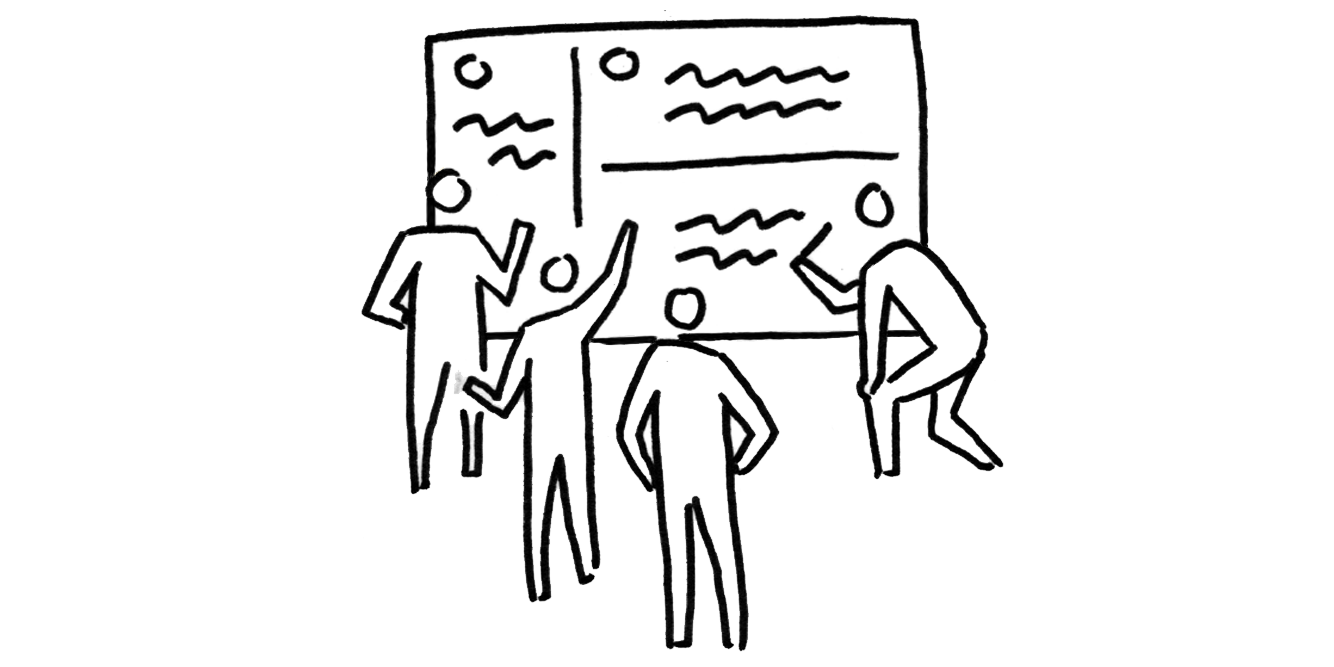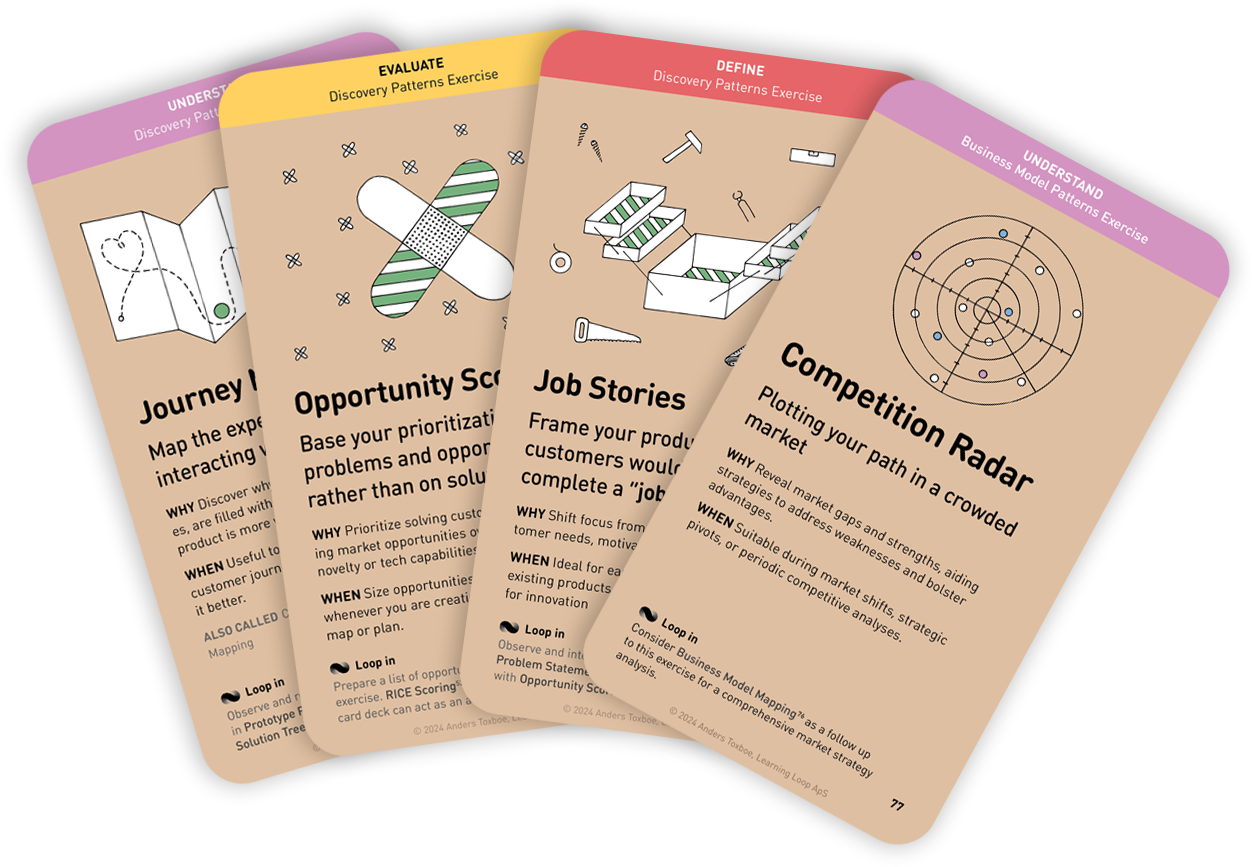
Why: A democratic way of gathering opinions ensuring equal participation and transparency in decision-making processes
When: Useful when you both need individual contributions and a quick visual overview of the group's preferences
Instructions for running this play
- Generate ideas or list a set of alternatives and put them on individual sticky notes on the same surface.
- Consider removing duplicates and clustering ideas through Affinity Mapping
- Vote. Each participant chooses a favorite from the list of ideas. Individually. Quietly. Participants write down their vote on a sticky note, without lobbying during the process, Timeboxed for 5 minutes. Choose different color sticky notes than what you are voting on.
- Put all the votes on the surface beside what they are voting on.
- Assess the outcome. Participants are free to share why they voted a certain way and discuss next steps based on the outcome
- Revote as needed. If you have a tie among top options or further prioritization is needed, the group can vote again to establish a clear winner.
Instructions for running this play
- Preparation. Set up an online whiteboard and designate a decision-maker. Create a separate workspace for participants. Frame a question on the whiteboard.
- Idea Generation. Participants write answers on virtual post-its. Use different colors for tracking. Encourage individual work without looking at others’ suggestions.
- Sharing and Clustering. Participants add post-its and explain them. Clarify unclear suggestions and consider clustering.
- Grouping and Clustering. Group duplicate ideas and cluster similar post-its.
- Dot Voting. Participants vote on favorite ideas or solutions. Allocate time for voting.
- Ranking Ideas. Tally up votes and rank ideas based on votes received.
- Turning Problems into Opportunities. Identify highest voted problems. Create “How Might We” statements for them.
- Final Voting and Decision. Participants vote on chosen “How Might We” statement. Decision-maker makes the final decision.
Note: Maintain the online whiteboard and keep all ideas for future reference.
Tips to perfect this play
Master and adapt the play to fit your context and needs.
Tip
Use different colors or shades to represent different criteria or categories of preferences. For example for user desirability, technical feasibility, or strategic alignment.
A collection of workshop exercises that will help you ditch dull meetings and facilitate with confidence. It will help you master the design process and have more productive time with your team. The card deck will be ready for purchase in the end of 2026 and is now undergoing rigorous testing.
Reserve your deck!